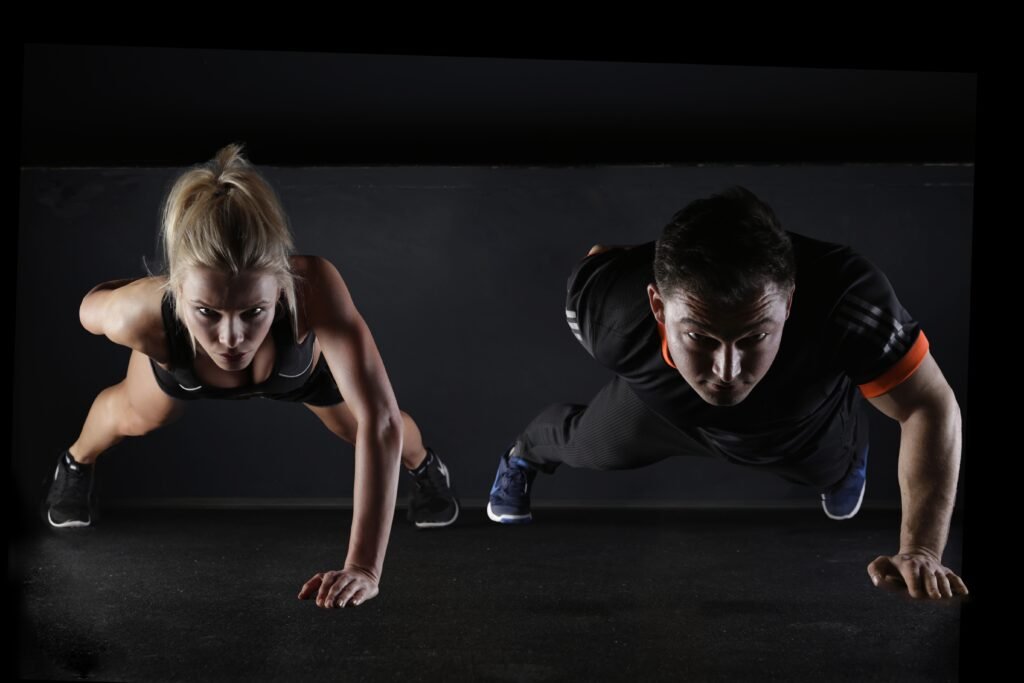Looking for a workout that’s high-energy, effective, and enjoyable? Shuffle dancing might be your perfect fitness solution! Known for its rapid footwork and dynamic movements, this dance style is more than just a fun hobby—it’s a full-body workout that helps burn calories, improve endurance, and sculpt muscles.
Let’s explore how shuffle dance can help you lose weight, build strength, and enhance overall fitness—all while having a blast!
What is Shuffle Dance?
Shuffle dance, often called “shuffling,” originated in Melbourne, Australia during the 1980s and quickly gained popularity in the rave and electronic dance music (EDM) scenes. Characterized by fast foot movements, including the famous “T-Step” and “Running Man”, shuffle dance has since evolved into a global phenomenon.
Today, it’s not just a dance but a powerful cardio workout used in gyms, social media challenges, and fitness classes worldwide.
Health Benefits of Shuffle Dance
1. Boosts Heart Health
Shuffle dancing is an excellent cardiovascular workout that gets your heart pumping and blood flowing. Consistently performing high-energy movements can help improve endurance, lower blood pressure, and reduce the risk of heart disease.
✅ Research Insight: According to Healthline (2022), regular cardiovascular exercise strengthens the heart and improves overall circulation.
2. Burns Calories Fast
Want to burn fat and lose weight while having fun? Shuffle dancing can help you burn between 500–800 calories per hour, depending on intensity.
🔥 Why is it so effective?
- High-Intensity Movements: Keeps your heart rate elevated, maximizing calorie burn.
- Interval Training Effect: Alternates between intense movements and slower steps, similar to HIIT workouts.
- Full-Body Engagement: Targets legs, core, and even arms for a complete workout.
✅ Reference: According to the American Council on Exercise (2015), dance-based workouts burn as many calories as running without the high-impact stress on joints.
3. Improves Coordination and Agility
Shuffle dancing requires precise footwork, which enhances coordination, reaction time, and overall agility. These skills translate to better athletic performance in sports, running, and other physical activities.
✅ Research Insight: A study from Verywell Fit (2021) found that dance workouts significantly improve balance and body control.
4. Strengthens and Tones Muscles
Although shuffle dancing focuses on leg movements, it engages the core, glutes, and stabilizing muscles, helping you develop toned legs and a stronger midsection.
💪 Muscles Targeted:
- Quadriceps & Hamstrings – from jumping and sliding movements.
- Glutes & Calves – from quick, repetitive steps.
- Core & Lower Back – from maintaining balance and posture.
✅ Reference: Livestrong (2020) highlights that dance-based cardio workouts enhance lower body muscle tone and endurance.
5. Elevates Mood and Mental Health
Dancing isn’t just great for the body—it’s amazing for the mind! The combination of music, movement, and rhythm helps release endorphins, the body’s natural “feel-good” hormones.
💡 Benefits of shuffle dance for mental health:
- Reduces stress & anxiety
- Improves focus and cognitive function
- Boosts confidence & self-expression
✅ Research Insight: The Mayo Clinic (2022) states that regular physical activity, including dance, can reduce symptoms of depression and anxiety.
How Shuffle Dance Torches Calories
🔥 Why does shuffle dancing burn so many calories?
1️⃣ It’s High-Intensity: Quick, continuous movements keep your heart rate elevated.
2️⃣ It Mimics Interval Training (HIIT): Short bursts of intensity followed by active recovery maximize fat burn.
3️⃣ It’s a Full-Body Workout: Engages multiple muscle groups simultaneously, increasing energy expenditure.
✅ Reference: A Healthline (2017) study found that high-intensity interval workouts burn more fat than steady-state cardio due to their afterburn effect.
How to Get Started with Shuffle Dancing
1. Choose the Right Music 🎵
Shuffle dancing is best performed to electronic dance music (EDM) with a fast tempo (120–140 BPM).
✅ Example Artists: Tiësto, Martin Garrix, Calvin Harris
2. Learn the Basic Steps 👣
Start with beginner-friendly shuffle moves:
- The Running Man: The signature step, involving quick alternate foot movements.
- The T-Step: A sideways shuffle with a bouncing motion.
✅ Reference: Dance Magazine (2020) emphasizes that beginners should master these basic steps before progressing to advanced moves.
3. Practice Regularly ⏳
🔹 Start with 15–30 minutes, 3–4 times a week.
🔹 Gradually increase intensity as your endurance improves.
🔹 Record your progress to track improvements in coordination and stamina.
✅ Reference: Livestrong (2020) recommends at least 150 minutes of moderate cardio per week for optimal fitness.
4. Join a Shuffle Dance Community 🤝
Dancing with others keeps you motivated and engaged. Look for shuffle dance groups in your area or join online communities.
🔹 Find a Meetup: Shuffle Dance Groups
✅ Reference: Meetup connects fitness enthusiasts with local and virtual shuffle dance classes.
Real-Life Success Story: Emily’s Shuffle Dance Journey
Emily, a young professional, started shuffle dancing to stay active without hitting the gym. After 3 months of practicing 3x per week, she noticed:
✅ Increased endurance & stamina
✅ Toned legs & core muscles
✅ Better coordination & confidence
🥳 Her verdict? “It doesn’t feel like a workout—it’s like a party!”
Final Thoughts: Why Shuffle Dance is the Ultimate Fun Workout
✅ Burns calories & fat efficiently
✅ Improves cardiovascular health & endurance
✅ Strengthens muscles & enhances coordination
✅ Boosts mood & mental well-being
✅ Perfect for all fitness levels—beginner to advanced
So, why not turn up your favorite EDM track, lace up your sneakers, and start shuffling? Whether at home or with friends, shuffle dance is your ticket to a fitter, happier, and healthier you! 🎶🔥



